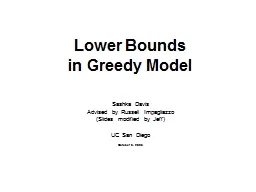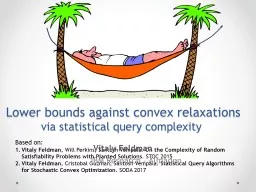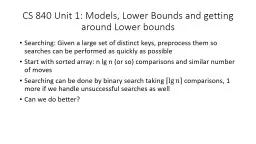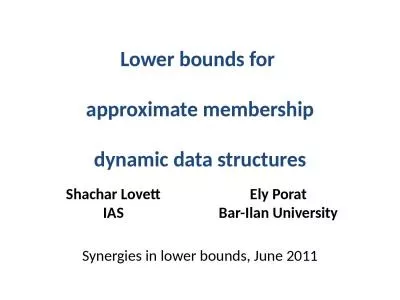PPT-Lower Bounds
Author : faustina-dinatale | Published Date : 2017-03-24
in Greedy Model Sashka Davis Advised by Russell Impagliazzo Slides modified by Jeff UC San Diego October 6 2006 Suppose you have to solve a problem Π Is there
Presentation Embed Code
Download Presentation
Download Presentation The PPT/PDF document "Lower Bounds" is the property of its rightful owner. Permission is granted to download and print the materials on this website for personal, non-commercial use only, and to display it on your personal computer provided you do not modify the materials and that you retain all copyright notices contained in the materials. By downloading content from our website, you accept the terms of this agreement.
Lower Bounds: Transcript
Download Rules Of Document
"Lower Bounds"The content belongs to its owner. You may download and print it for personal use, without modification, and keep all copyright notices. By downloading, you agree to these terms.
Related Documents














